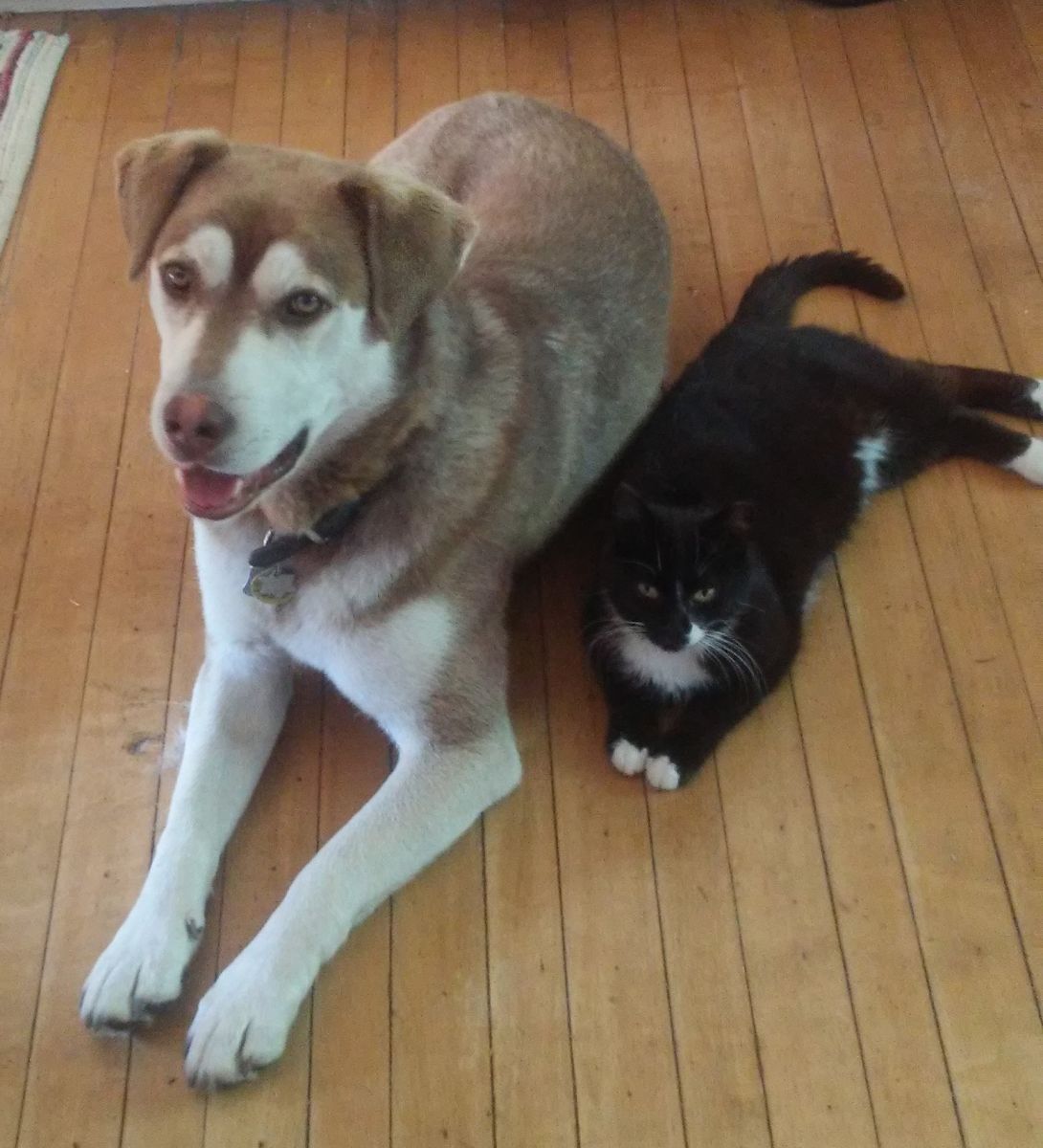Our discussion this week surrounds a disorder which has become particularly important to me in the past couple of months, as it affects a furry friend who is close to my heart. Arthur is a petite tuxedo cat who came to us as a stray and effortlessly purred, chirped and cuddled his way into our home. While he appeared healthy initially, soon he began to demonstrate a sporadic hacking, wheezing cough which left us puzzled for some time. These spasms lasted several seconds, and unfortunately seemed to be initiated by Arthur’s purring – I was becoming reluctant to give pats to my very friendly and cuddly boy!
From Arthur’s posture during these episodes, we concluded hairballs were likely and began a treatment regime of a mineral oil-based laxative, regular grooming and a high fibre gastrointestinal food. Nothing seemed to be calming Arthur’s clinical signs, but thankfully, a lucky conversation put  us on the right track. Enter Dr. Mary Walker, a veterinarian with Heartland Veterinary Services. Dr. Mary listened while I described Arthur’s episodes, and suggested we do a work up with asthma high on our differential list. Dr. Mary saw Arthur in an appointment days later, and after consultation with her we started Arthur on a trial of prednisolone, which is an effective anti-inflammatory agent. Arthur’s cough improved immediately! An important concept when administering corticosteroids such as prednisolone is to wean the patient down to their lowest effective dose; Arthur is now down to a half tablet once a day, and we plan to continue weaning him down as long as his airway inflammation is controlled. He seems a happier cat, and purrs proudly any chance he gets.
us on the right track. Enter Dr. Mary Walker, a veterinarian with Heartland Veterinary Services. Dr. Mary listened while I described Arthur’s episodes, and suggested we do a work up with asthma high on our differential list. Dr. Mary saw Arthur in an appointment days later, and after consultation with her we started Arthur on a trial of prednisolone, which is an effective anti-inflammatory agent. Arthur’s cough improved immediately! An important concept when administering corticosteroids such as prednisolone is to wean the patient down to their lowest effective dose; Arthur is now down to a half tablet once a day, and we plan to continue weaning him down as long as his airway inflammation is controlled. He seems a happier cat, and purrs proudly any chance he gets.
Arthur’s story made it to my blog because I learned some important lessons while trying to discover the source of his cough. Firstly, veterinarians are an excellent source of knowledge and experience. Even though Arthur’s case seems clear-cut in hindsight, I struggled while it was ongoing and am very grateful for Dr. Mary’s help. Secondly, don’t settle for an idea just because it is convenient. I do regret the time I spent believing Arthur had “bad hairballs”, and wish I had reached out for help sooner. That will remain with me as an important lesson for when I am a practising veterinarian and find myself working up cases where the “obvious” or easy diagnosis needs to be further explored to best treat a patient. Finally, media can be confusing! While teaching me about feline asthma, Dr. Mary mentioned a scene in DreamWorks’s Shrek 2 where Puss in Boots assumes a posture and produces a cough very similar to the asthmatic one Arthur suffered, before recovering and pronouncing, “Blegh. Hairballs”. Apparently, feline asthma is commonly confused with hairballs. Cats have gastrointestinal tracts which are designed to handle hair; should small piles of hair appear on the floor, owners are advised to rule out GI upset and vomiting. A trip to the vet is in order for a thorough exam and consultation. I’ll forgive DreamWorks for the medical oversight, but perhaps a prednisolone trial for an asthmatic Puss is in order!
(Photo: Arthur the cat with his best friend Timber.)
